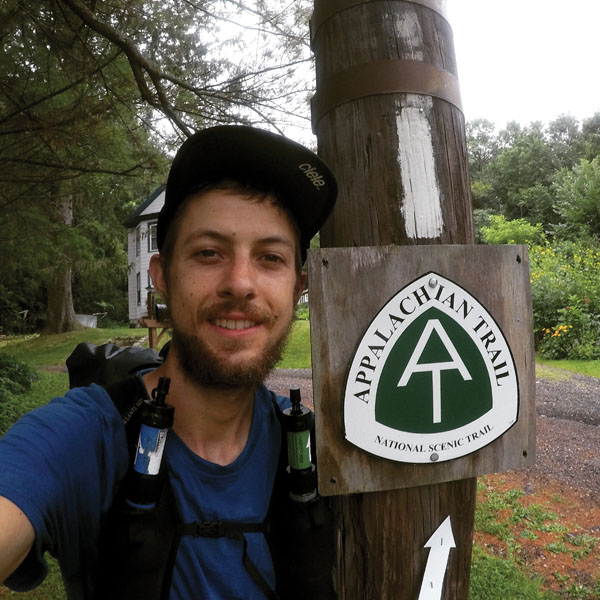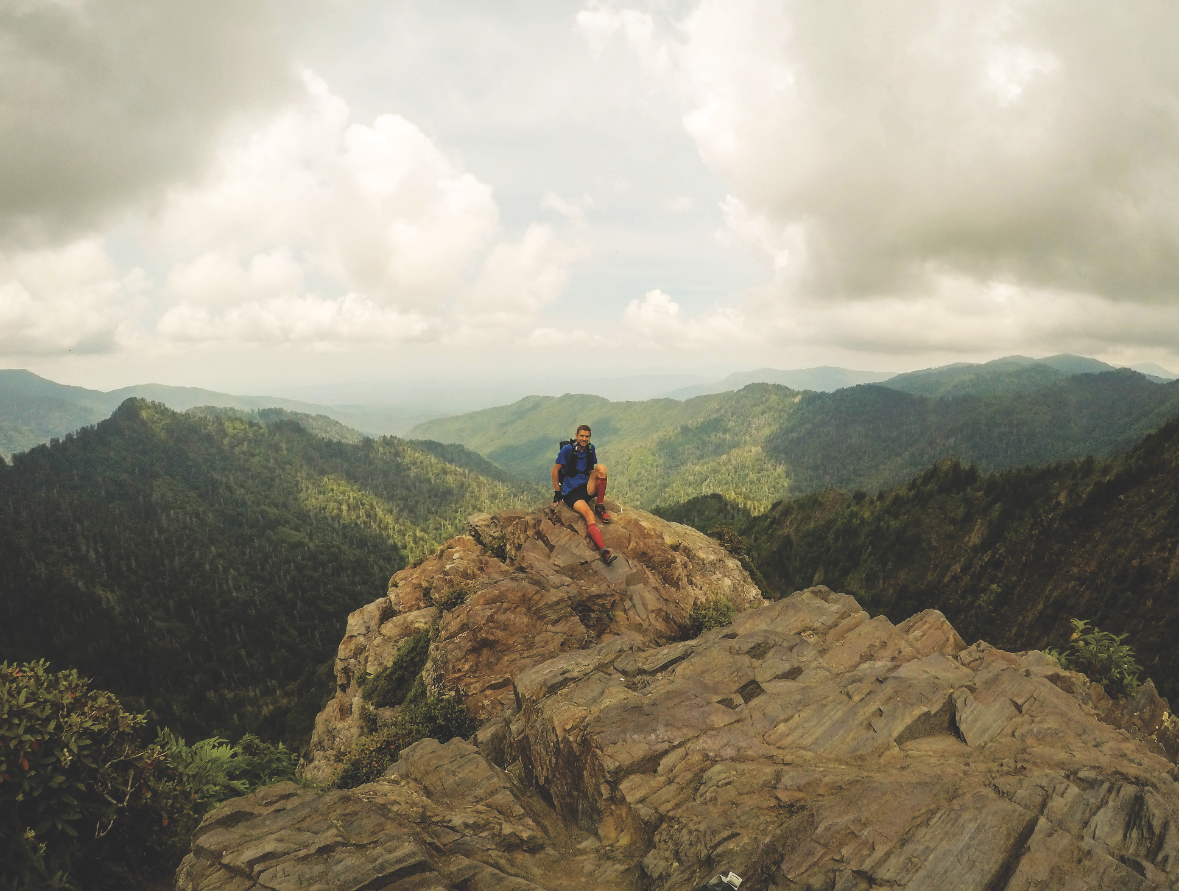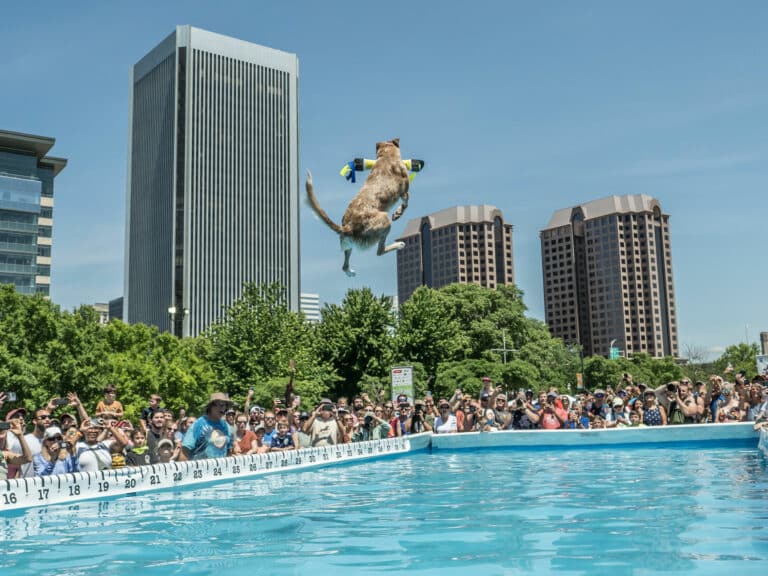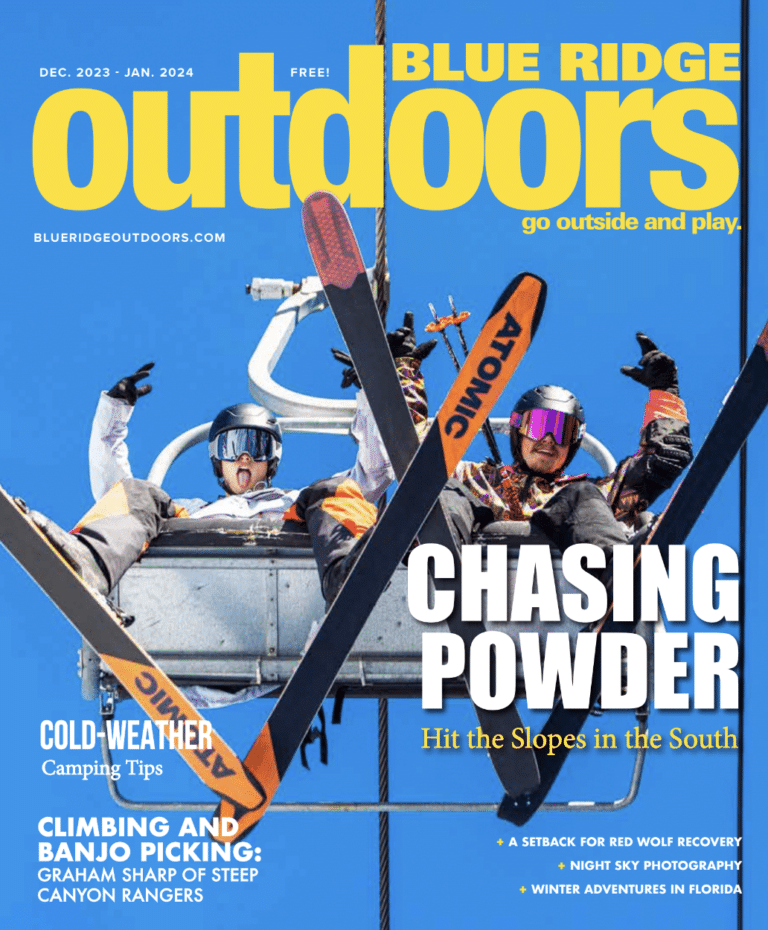Running northbound into the Great Smoky Mountains, Joe “Stringbean” McConaughy started to show signs of rhabdomyolysis, or “rabdo” as it’s known in the ultrarunning community. The condition is caused by excess muscle breakdown, and if left untreated, can permanently damage your kidneys. “They say it’s bad when your pee turns red, and that happened an hour later,” he went on. There in North Carolina, only a few hundred miles into his 2,190-mile journey, was the first moment Joe truly questioned if he could even complete his journey, much less break the speed record set by Karl “Speedgoat” Meltzer on September 18, 2016. “My heart was always in it,” he said, “but it became more a question of, ‘Can I keep this up?’”
As a lot of luck and unfathomable grit would have it, McConaughy crested the northern terminus of the A.T., Maine’s Mount Katahdin, in 45 days, 12 hours, and 15 minutes, setting a new overall fastest known time. He did it all without a single sponsor and without a crew. He carried everything needed on his back, only picking up the next section’s food and supplies at pre-planned waypoints, just like countless traditional thru-hikers before him.
McConaughy’s record-breaking run required averaging 50 miles per day, and in accounting for inevitable setbacks along the way, he had to somehow pull off an unbroken 37-hour, 110.8-mile push to the finish. While such a feat may seem inhuman to most of us, it was the culmination of meticulous planning, years of conditioning, and an enormous, humble heart.

McConaughy is no stranger to the nation’s top trails. The Seattle native took to the woods as a Boy Scout, and those early experiences sparked what became a lifelong passion. While attending college in Boston, he got to know what he notes are some of the most beautiful sections of the Appalachian Trail. By the time he got the idea to attempt the AT speed record, he had thru-hiked the Pacific Crest Trail (PCT) and gone on several runs in Maine’s White Mountains. He had varying expectations for the A.T., one of the oldest long trails in the United States. In sorting through opinion and fact, McConaughy says, “Everywhere you go, everyone thinks they have the toughest mountains.”
While countless hikers compare the two, each trail is challenging in its own way. The PCT’s remoteness, terrain, and often unpredictable climate weeds out many would-be hikers. But in the northeast, the A.T. is rocky and heavily rooted, a far cry from the many carefully designed and graded sections of the PCT. After his PCT trip, McConaughy expected injury and was ready to embrace the dark moments, but while section hiking the White Mountains, he realized there’s truth to how difficult many easterners claim their long trail is. Either way, no matter how hard or how easy it feels at any given time, he says, “you’re always pushing yourself as hard as you can go.”
While most of the PCT traces California, he says, on the A.T., “each state is its own little microcosm.” Southern summer rainstorms and relentless humidity from Georgia to Virginia caught him off guard. Pennsylvania is dubbed “Rocksylvania” by A.T. regulars. New Hampshire is rugged; Maine, eerily remote. The mud seems endless in Vermont. Massachusetts, he recalls, was all-encompassing, the route steeped in Revolutionary War history, fun trail towns, a few ice cream shops, and farms selling delicious food. “The trail itself is a part of the nation’s history,” he adds. “At the end of the day, it is such a historic and monumental thing to do no matter how you do it.”
But what defines the A.T. for Stringbean is its community. Inevitably on a monumental quest like his, soaring highs accompany the lowest lows. It was these inspiring moments that assured Joe he could accomplish his goal. There’s the famous Omelette Guy in Vermont, one of many trail angels, who sets up his breakfast stand all season to make omelettes for hungry hikers with as many eggs as they can count (homemade cornbread muffins included). It’s this trail magic, the special brand of synchronicity only found there, that allowed McConaughy to “stumble upon things when I needed them most.”
His only regret is his inability to repay the favors of the many people he met along the way, whether thanking them through his company or by paying it forward. To his critics who insist that aiming for a speed record causes one to miss the whole point of the trail, McConaughy says simply that no, he didn’t miss out. “I did it the way I wanted to.”
On the trail, he muses, “you have so much time to yourself. You get grand ideas, and once you’re back in the ‘real’ world and wanting to execute those ideas, you don’t realize how you truly spend your time and how easily it gets away from you.” While his physical recovery stretches on, Stringbean is mentally decompressed from the monumental run, having started working just four days off the trail. Like many athletes, work helps him to quickly find a renewed purpose not linked to the finish. After any extended travel or completed goal, “It’s over,” he says. “It ends, and it’s just so abrupt.” It’s a familiar story that leads many down dark roads in the ensuing weeks, but thanks to his support system and getting back to the grind, McConaughy enjoyed his first run at the end of September, “high on life again.”
During the first half of his journey, back in North Carolina, he was afraid that progressing rabdo might be the end of the line. Fortunately, two chance encounters on the trail gave him the strength to continue: fellow ultrarunners who gave him salt pills and two emergency room doctors whose expert knowledge and hydration tips quelled his fears. More trail magic. “I will be forever perplexed and appreciative of what the wilderness brings out in myself and others,” he reflects from an Instagram post announcing the finish.
In New Hampshire, McConaughy crested Mount Moosilauke and finally found service, which he’d been battling with the entire trip. He managed to get through to his girl friend Katie to share his joy, as it really settled in how he just might do it. With the “unsupported” record within reach, he contemplated how this accomplishment is far from unsupported; it was possible because of the dedication, support, and random kindness of so many others directly and indirectly connected to his path, including those he’s never met. “There are so many people who paved the way before me. There are a lot of people who sacrificed to help me get here.” It’s no wonder Stringbean was quick when asked for a single take-away from the trek: “The people around you are the ones who are the most important.”
Stringbean’s Secrets
What’s the one piece of gear you couldn’t go without?
My Mountain Laurel Design bivy was essential. A bivy was a little claustrophobic, but by the end I had embraced it as my hobo home that you can set up anywhere.
Favorite trail fuel?
Oreos or Pop-Tarts are way up there in my list, but it is hard to beat chocolate-covered almonds.
Did you listen to music? Favorite artists/tracks?
No music! I didn’t have any electricity to waste. “Ways to Go” by Grouplove was a song that’d I’d always get stuck in my head and hum.
How many bear sightings?
16!
How often, if ever, did you shower?
I stayed in three Trailside hotels and showered at each one. That was it! I did try to bathe in rivers along the way.
Favorite stretch of the trail?
Tough question—I might have to go with Shenandoah National Park. But there were so many amazing places.
Would you do it again?
Yes, but to hike it.








